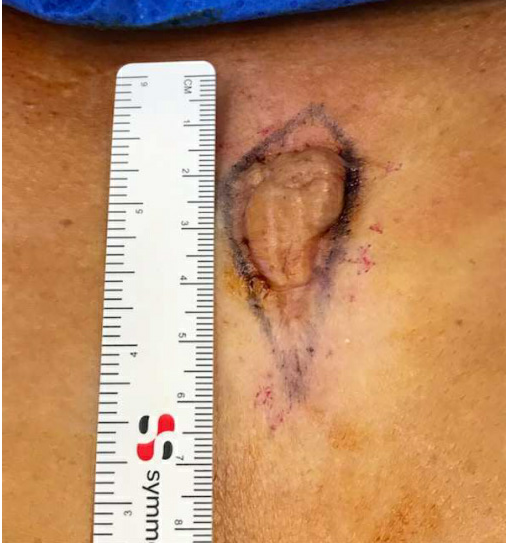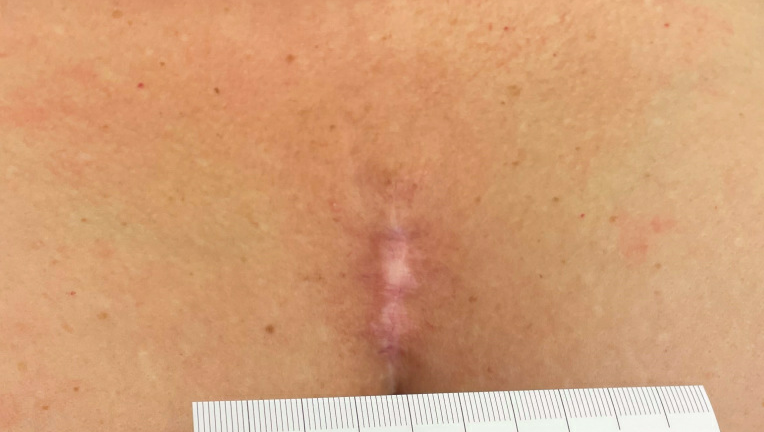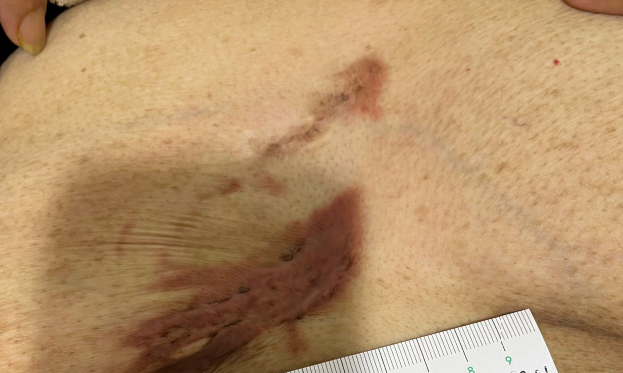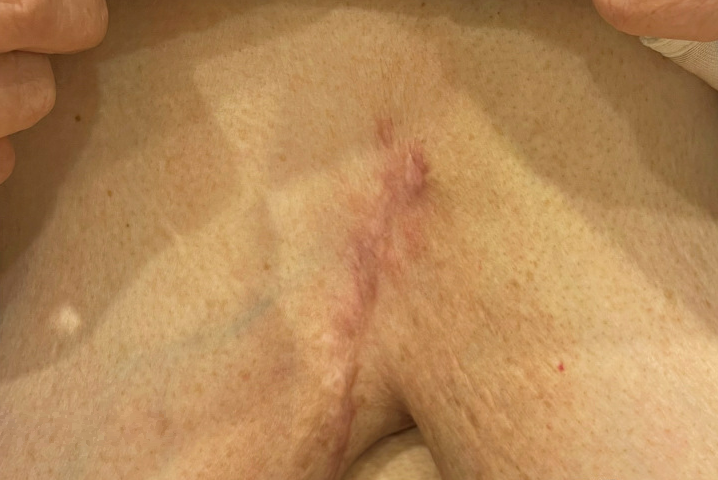What are keloids?
Keloid are scars in which the scar-forming tissue has overgrown. They are benign (non-cancerous), and are typically lumpy and raised. They are often painless but may be tender or itchy. While the cause is not fully understood, they are often associated with a skin injury, such as surgical incision, piercing, burn, scratch, cut, injection or bug bite. Keloids do not turn into cancers and are not contagious.
Keloids are more common in people under the age of 30, and those who have darker skin. They may also be hereditary.1
Keloids often occur in visible locations that cause self-consciousness. If they occur in areas that are a problem for you, or if they are uncomfortable, they can be removed by surgical excision. However, keloids often grow back after surgery used alone. Radiation therapy after surgical excision can help prevent them from recurring.
Radiation following surgery for keloid treatment
Because keloids have such a high recurrence rate following surgery alone, it is recommended that radiation therapy should start within 24- to 72-hours after surgery. Additionally, when radiation is not after the first surgical removal, additional surgeries could be required.
Radiation therapy is a treatment using beams of radiation targeted at specific areas of the body to treat various cancerous and non-cancerous diseases. There are various kinds of radiation therapy, which are used to treat different conditions in different ways. Cancerous tumors are targeted and destroyed with powerful, high-energy radiation, whereas keloid scars are treated with lower doses of radiation that is directed towards the skin. Because of this lower dose, the risk of side effects is much less.
At GenesisCare, we use electron beam radiation therapy or superficial x-rays, which are both forms of radiation therapy that do not penetrate deeply into the body. With these radiation treatments, we can precisely treat the area where the keloid scar was removed, to a shallow depth, while sparing healthy tissue and organs.
We offer electron beam radiation therapy and/or superficial x-ray treatments at most of our locations across the nation. Visit our locations page to learn what centers offer radiation for keloids near you.
There may be minimal side effects associated with radiation therapy for the treatment of keloids. The most common side effects are modest redness of the skin, itching and dryness of the skin. Typically, these side effects resolve within a number of weeks after treatment. If surgery was done in a hair-bearing region, then hair-loss in that area may occur.
Your GenesisCare team will advise you on the best way to deal with and prevent side effects and will be available during and after your treatment should you have any questions.
If you are having surgery for the treatment of keloids, our team will coordinate with you and your referring provider to schedule radiation within a critical window of 24 to 72 hours after your surgery. Typically, radiation is provided on an outpatient basis over the course of 1 to 5 sessions, with each session roughly lasting only a few minutes at a time.
Here is what to expect when you decide on radiation following surgery for the treatment of keloids:
Your GenesisCare team will be available to you following your radiation therapy should you have any questions.
Keloid treatment


Keloid treatment


GenesisCare offers access to the latest technologies, advanced treatments and personalized care that’s tailored to the individual without delay, both for the treatment of cancer and non-cancerous conditions, such as keloids.
We specialize in advanced radiation therapy techniques that are designed to be effective and minimize the side effects you’ll experience. As a leader in cancer care and other challenging conditions, our broad experience and world-class expertise means we offer advanced and innovative radiation therapy as standard.
References
- Juckett G, Hartman-Adams H. Management of Keloids and Hypertrophic Scars. In: American Family Physician, 2009; 80(3), 253-260.
- Zainib M, Amin NP. Radiation Therapy In The Treatment Of Keloids. [Updated 2021 Aug 6]. In: StatPearls [Internet]. Treasure Island (FL): StatPearls Publishing; 2022 Jan-. Available from: https://www.ncbi.nlm.nih.gov/books/NBK499973/
- Lee, S. Y., & Park, J. (2015). Postoperative electron beam radiotherapy for keloids: treatment outcome and factors associated with occurrence and recurrence. Annals of dermatology, 27(1), 53–58. https://doi.org/10.5021/ad.2015.27.1.53.
- Ogawa R, Tosa M, Dohi T, Akaishi S, Kuribayashi S. Surgical excision and postoperative radiotherapy for keloids. Scars Burn Heal. 2019 Dec 10;5:2059513119891113. doi: 10.1177/2059513119891113. PMID: 31840001; PMCID: PMC6904783.